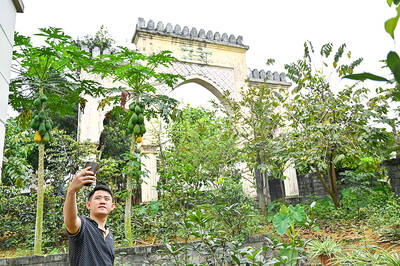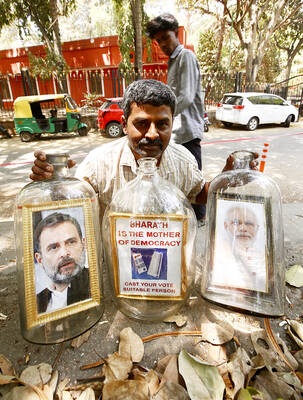A landmark inquiry into Australia’s mining sector has uncovered dozens of shocking cases of sexual harassment and abuse of female workers at companies including BHP Group and Rio Tinto Group.
The government of Western Australia described “horrific” incidents at the workplaces in a report yesterday, saying that the the incidents were a failure of the industry and government oversight.
Among the recommendations were the payment of compensation to the many workers who were victims of bosses and colleagues on remote projects.
“I was shocked and appalled well beyond expectation by the size and depth of the problem,” inquiry chair Libby Mettam said in the report.
“To hear the lived reality of the taunts, attacks and targeted violence, the devastation and despair the victims experienced, the threats to or loss of their livelihood that resulted was shattering and completely inexcusable,” she said.
The probe delved into the dark corners of an industry that is under mounting pressure from investors, governments and society to address its impacts on local communities and the wider environment.
BHP and Rio Tinto issued their own inquiries after allegations from women emerged in Western Australia’s lucrative resources industry, where so-called “Fly In-Fly Out” (FIFO) workers are transported to remote sites for several weeks at a time.
Allegations of abuse included a woman involved in a safety issue who was told by a supervisor she could “make the issue go away” if she had sex with him.
Another was knocked unconscious in her room and woke up undressed with her jeans around her ankles.
Another described how a man forced his hands down her top several times in front of other workers and “no one did anything.”
After complaining about colleagues making sexual jokes about her, a woman said her supervisor’s response was to “force himself on her.”
Other allegations included sex dolls and toys placed in women’s sleeping quarters; stalking, unsolicited texting, and provocative photo requests; and “shoveling,” in which iron ore was dumped inside the vehicles of female drivers who did not comply with sexual requests.
The inquiry revealed that BHP Group recorded 91 reports of alleged sexual harassment or assault in the year through June 30 last year, of which 79 were substantiated.
Rio Tinto, from January 2020 to August last year, received 51 complaints of sexual harassment or assault in FIFO operations, including one substantiated report of sexual assault and 29 substantiated reports of sexual harassment.
“Rio will closely study the report’s recommendations,” the company’s iron ore chief Simon Trott said in a statement. “The courage of people coming forward to tell their stories has been critical in terms of shining a light on behaviors that must change within our company and our industry.”
Allegations of abuse were also received at projects operated by Woodside Petroleum, Fortescue Metals Group and Chevron Corp.
Chevron said it would also review the findings and the inquiry has “provided a critical opportunity to learn, act and improve.”
Fortescue CEO Elizabeth Gaines said that while the company has implemented safety enhancements at worksites after conducting its own review, “we acknowledge that some inappropriate behavior still occurs.”
In Western Australia, a resource-rich state four times the size of France that is the center of a massive iron ore industry, remote mines that can only be accessed through flights by FIFO workers have been especially risky for women. They remain largely male-dominated, with workers living in camp-style accommodation.

Le Tuan Binh keeps his Moroccan soldier father’s tombstone at his village home north of Hanoi, a treasured reminder of a man whose community in Vietnam has been largely forgotten. Mzid Ben Ali, or “Mohammed” as Binh calls him, was one of tens of thousands of North Africans who served in the French army as it battled to maintain its colonial rule of Indochina. He fought for France against the Viet Minh independence movement in the 1950s, before leaving the military — as either a defector or a captive — and making a life for himself in Vietnam. “It’s very emotional for me,”

The Chinese Communist Party’s (CCP) Central Committee is to gather in July for a key meeting known as a plenum, the third since the body of elite decisionmakers was elected in 2022, focusing on reforms amid “challenges” at home and complexities broad. Plenums are important events on China’s political calendar that require the attendance of all of the Central Committee, comprising 205 members and 171 alternate members with Chinese President Xi Jinping (習近平) at the helm. The Central Committee typically holds seven plenums between party congresses, which are held once every five years. The current central committee members were elected at the

Indian Prime Minister Narendra Modi reaffirmed his pledge to replace India’s religion-based marriage and inheritance laws with a uniform civil code if he returns to office for a third term, a move that some minority groups have opposed. In an interview with the Times of India listing his agenda, Modi said his government would push for making the code a reality. “It is clear that separate laws for communities are detrimental to the health of society,” he said in the interview published yesterday. “We cannot be a nation where one community is progressing with the support of the Constitution while the other

CODIFYING DISCRIMINATION: Transgender people would be sentenced to three years in prison, while same-sex relations could land a person in jail for more than a decade Iraq’s parliament on Saturday passed a bill criminalizing same-sex relations, which would receive a sentence of up to 15 years in prison, in a move rights groups condemned as an “attack on human rights.” Transgender people would be sentenced to three years’ jail under the amendments to a 1988 anti-prostitution law, which were adopted during a session attended by 170 of 329 lawmakers. A previous draft had proposed capital punishment for same-sex relations, in what campaigners had called a “dangerous” escalation. The new amendments enable courts to sentence people engaging in same-sex relations to 10 to 15 years in prison, according to the